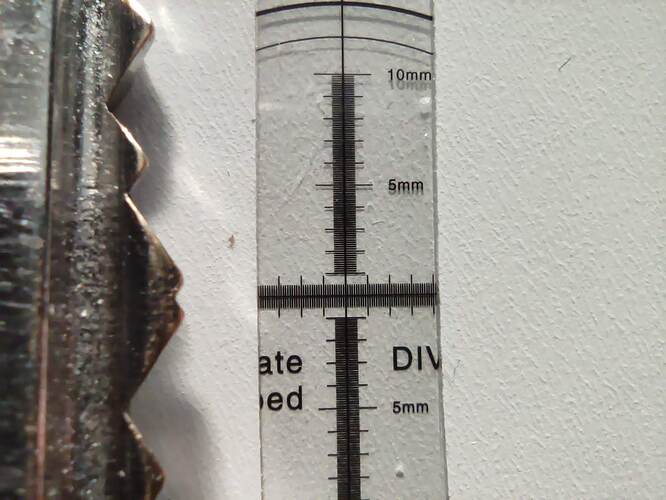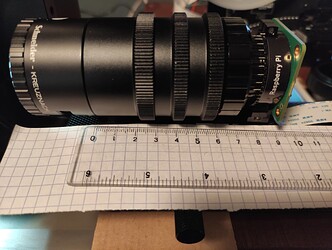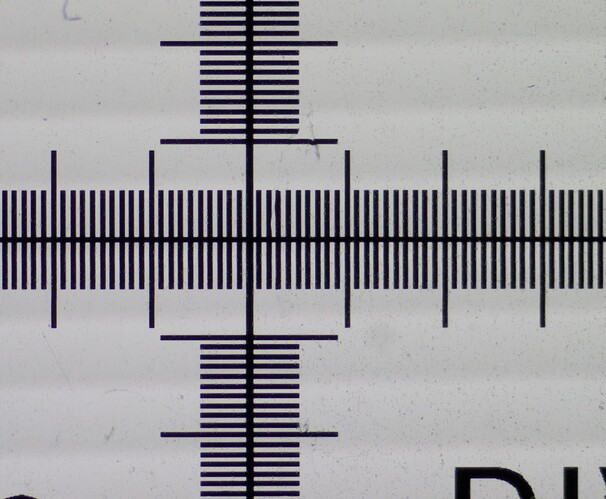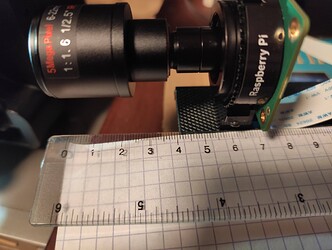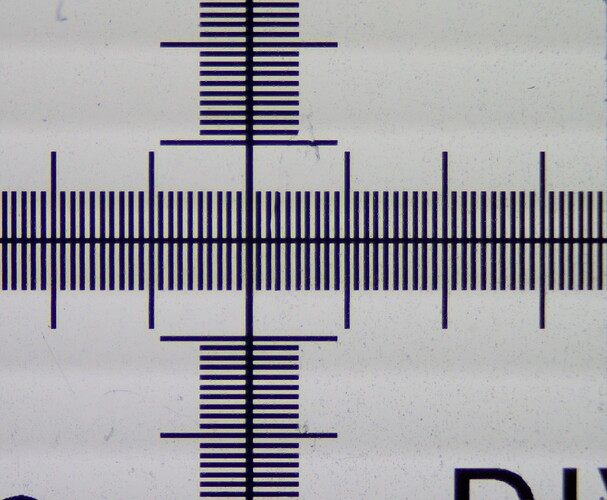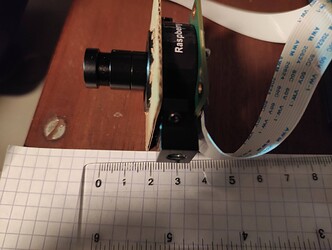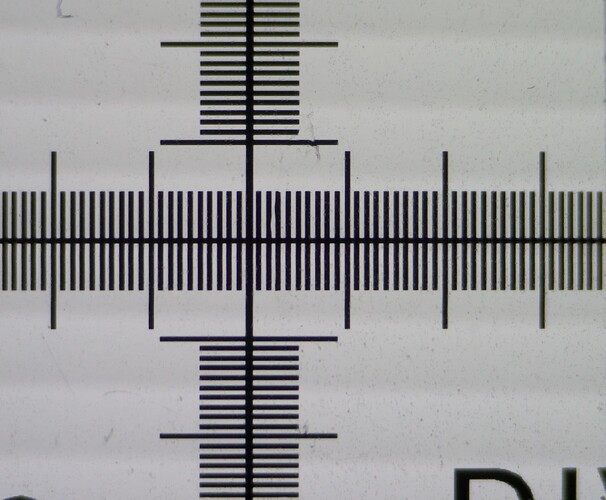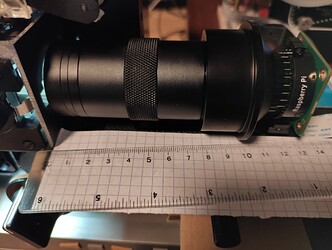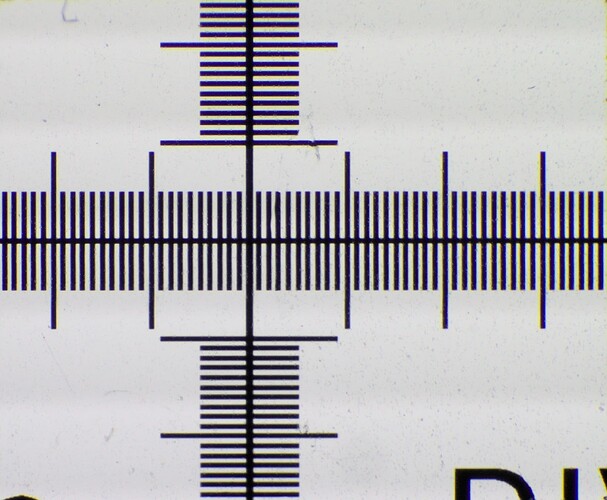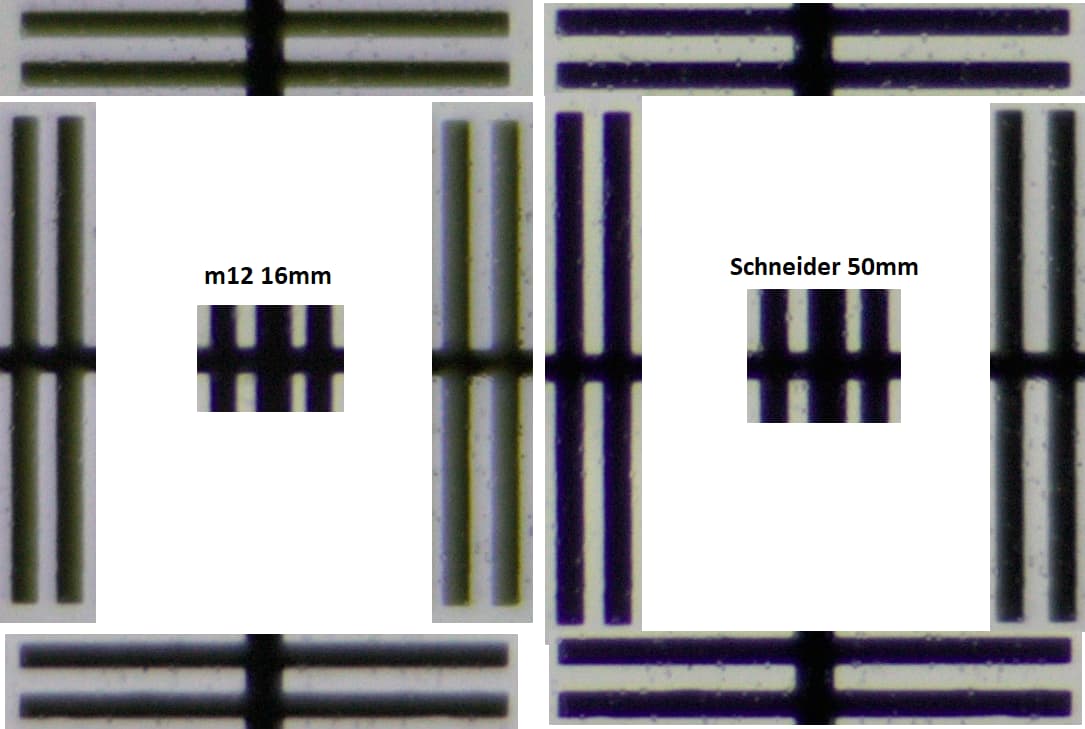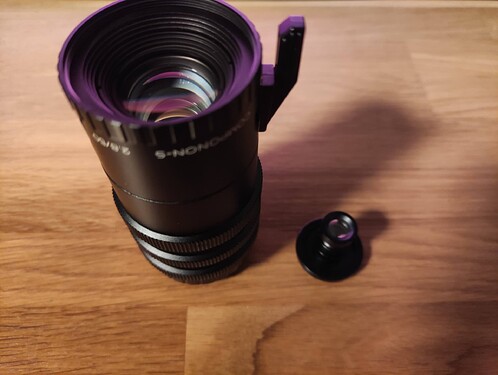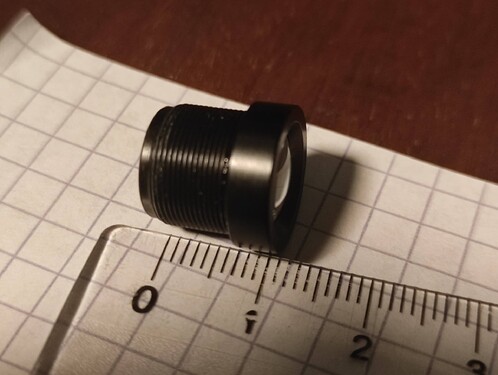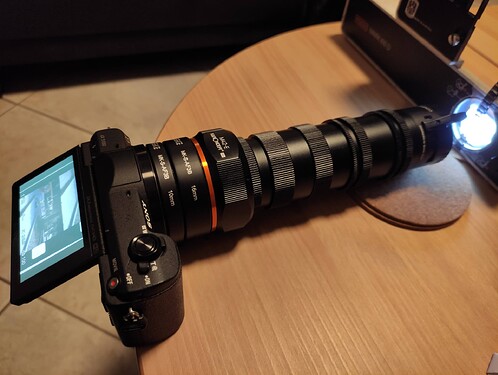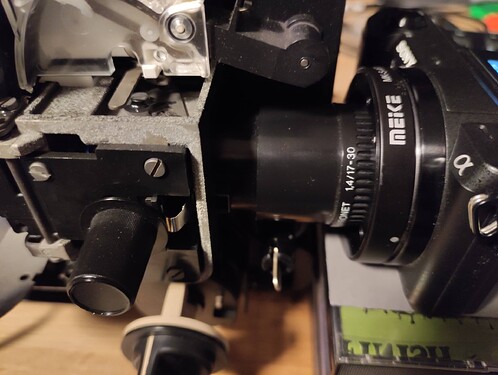I’ve been using the RPi HQ camera with the Schneider Componon-S 50mm for a while now. I think it’s the best solution so far, and I see why it’s recommended on this site multiple times. But I’m not really satisfied for multiple reasons:
1 - When in focus it’s an overall good lens for capturing super8, but it’s like 2 megapixel good in the center, and a little less when moving out from the center. It’s not 12MP good, and I don’t see the filmgrain detail I would like to have.
2 - It seems overkill to use such a big lens, for such a small object + small sensor, this can be more efficient (cheaper). But still I would rather have a huge lens that’s great, than a tiny lens that’s blurry in the corners.
3 - It’s difficult to focus, but most are, simply becouse the super8 film is so tiny.
So I set out to test the lenses (mostly to find the best image quality) I have on the RPi HQ camera with the following 8mm wide cutout (next to a key):
First, the componon-s 50mm ‘reference’ lens, with some extension tubes:
I rate this lens:
- sharpness center: 8
- sharpness edges: 7
- color fringing: 10
NOTE: I edited all images slightly so they are better comparable. I aligned, cut and white balanced them all.
Second is my old €20 m12 6-22mm zoom lens:
It performs not bad at all, but you can see some color fringing
I rate this lens:
- sharpness center: 7
- sharpness edges: 6
- color fringing: 5
Third is my old m12 16mm lens (I think it’s 16mm, but there’s no description on the lens and I lost the info from where I bought multiple different tiny lenses for max €5):
Before I had the componon-s I used this lens a lot. It’s almost perfect. Technically this solution can be cheap, very small, and give the same results as big or huge lenses. But does such a lens exist, and how do I find it if it does?
Anyway, I rate this lens:
- sharpness center: 8
- sharpness edges: 5
- color fringing: 9
My fourth attempt is a newly bought €16 “microscope” lens, hoping to get more sharpness. Looking at many video’s about these things they should be able to do the job:
I was disappointed and rate this lens:
- sharpness center: 7
- sharpness edges: 6
- color fringing: 4
Lastly, here’s a cutout compare of the edges and center of what I think are currently my 2 best lenses for super8 capture:
A clear win for the schneider, but still not as good as I would like. Here’s the two lenses with their extension tubes, side-by-side:
And the 16mm tiny lens all alone:
Random experiment trying to use a 23MP DSLR instead of the 12MP RPi HQ. But this time the lens setup really becomes rediculous.
Another random and very simple experiment. Using a projector and the normal projector lens, you can ‘project’ the super8 frame onto the DSLR sensor. The image quality is not bad at all, and the lens setup seems really efficient.
What other lenses or setups do you use? I’m very interested so please reply, preferably with images.
Some random thoughts:
- With the RPi HQ camera we are doing a close to 1:1 magnification. This is basically what every macro lens does, so would using a good 50mm macro lens perhaps be the perfect solution for image quality? However, not the most efficient or cheap solution. When using a lens in its working range, we can look for reviews on how they perform. The only difference being that we use a smaller sensor so the 1:1 magnification perfectly fits the super8 usecase.
- When using larger sensors (APS-C of fullframe), we need a magnification of 4? This is not what any normal lens is made for (besides some exotics like made by laowa). This is more in the “microscope” range of things. Now I see there’s many cheap microscope lenses, and adapters for many DSLR mounts. So wouldn’t this be a good solution? Basically turning a DSLR into a microscope makes more senso to me than using huge lenses, with even larger extension tubes to get results.
